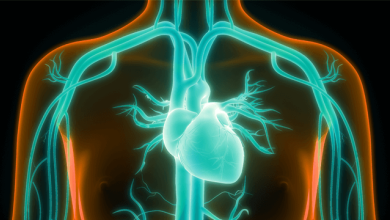Search results
Author(s):
Penelope A Boyden
,
Wen Dun
,
Bruno D Stuyvers
Added:
3 years ago
Abnormalities in electrical rhythm were studied by Einthoven at the start of the 20th century. In the 1940s, studies by Bozler et al.1 described contractile signals that appeared to be ‘triggered’ heart beats. Today we use the term delayed afterdepolarisations (DADs) to refer to oscillations in voltage that follow a driven action potential.
In the mid-1970s, progress was made when Lederer and…
View more
Author(s):
Megan Barber
,
Jason Chinitz
,
Roy John
Added:
3 years ago
Ventricular arrhythmias are designated idiopathic when demonstrable structural heart disease, significant coronary disease including coronary spasm or genetic arrhythmia syndromes are absent.1 These arrhythmias may be benign but are also a recognised cause of sudden cardiac death. The common form of idiopathic ventricular tachycardia (VT) originates in the ventricular outflow tracts, manifest…
View more
Author(s):
Domenico G Della Rocca
,
Sanghamitra Mohanty
,
Chintan Trivedi
,
et al
Added:
3 years ago
AF is the most common sustained arrhythmia, and carries an increased risk of cardiovascular and cerebrovascular complications. The latest estimates on the prevalence of AF portray an alarming scenario, with a steep increase in the number of people developing AF and prediction that the number affected will more than double in the next 40 years.1 Among the strategies to restore and maintain sinus…
View more
Author(s):
Sebastian Clauss
,
Moritz F Sinner
,
Stefan Kääb
,
et al
Added:
3 years ago
Atrial fibrillation (AF) is the most common arrhythmia experienced in clinical practice, and is responsible for significant morbidity and mortality.1 It affects more than 6 million people in Europe.1 The lifetime risk of developing AF after the age of 40 is approximately 25 %.1 AF is a major public health burden as it is associated with an increased risk of stroke by fivefold, dementia by twofold…
View more
Author(s):
Mohamed Abbas
,
Chris Miles
,
Elijah R Behr
Added:
1 year ago
Author(s):
Nabil El-Sherif
,
Gioia Turitto
,
Mohamed Boutjdir
Added:
3 years ago
Since its initial description by Jervell and Lange-Nielsen in 1957,1 congenital long QT syndrome (LQTS) has been the most investigated cardiac ion channelopathy. A prolonged QT interval on the surface ECG is a surrogate measure of prolonged ventricular action potential duration (APD).
Congenital as well as acquired alterations in certain cardiac ion channels can affect their currents in such a…
View more
Author(s):
Serge Sicouri
,
Charles Antzelevitch
Added:
3 years ago
The link between sudden unexplained death in individuals with mental health problems who are administered antipsychotic drugs has been recognised for over a century.1 A clear relationship has emerged over the past 25 years between antipsychotic drugs, prolongation of the QT interval of the ECG, atypical polymorphic tachycardia known as torsade de pointes (TdP) and sudden cardiac death (SCD). A…
View more
Author(s):
Antonio Zaza
,
Carlotta Ronchi
,
Gabriella Malfatto
Added:
3 years ago
The incidence of ventricular arrhythmias is often related, within an individual, to the rate of their underlying sinus rhythm (heart rate). The direction of this relationship is generally considered to entail some prognostic significance: whereas ectopic activity suppressed by tachycardia is assumed to be benign, an arrhythmia enhanced by tachycardia is regarded with more concern. Is this…
View more
Author(s):
Mario Njeim
,
Frank Bogun
Added:
3 years ago
Percutaneous ablation for ventricular tachycardia (VT) was first attempted in 1983 and has rapidly evolved to become an important option for controlling recurrent VTs.1 Endocardial ablation remained the only percutaneous approach until epicardial access was introduced by Sosa et al. in 1996 and thereafter became progressively more available as an adjunctive strategy for the treatment of…
View more













